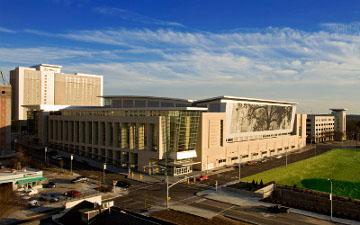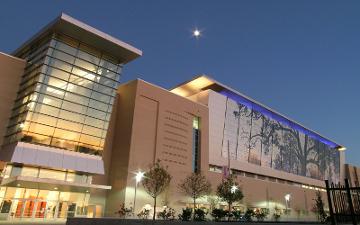
PSAAP Centers: Predictive Science in Computational Mechanics
Robert Voigt
In 2008 the Advanced Simulation and Computing Program of the National Nuclear Security Administration initiated the Predictive Science Academic Alliance Program (PSAAP) by establishing five university research centers. These PSAAP Centers focus on the emerging field of predictive science, i.e. the application of verified and validated computational simulations to predict the behavior of complex multiscale, multiphysics systems, with quantified uncertainty. In these presentations, each center will describe briefly their application and then focus on their development and use of verified and validated simulations to predict quantities of interest, and their method for quantification of uncertainties. A brief description of each center follows.
California Institute of Technology: The Center for the Predictive Modeling and Simulation of High-Energy Density Dynamic Response of MaterialsThe Center is focused on predicting the behavior of targets subjected to normal and oblique impact by metallic projectiles at velocities up to 10 km/s. The simulations are validated via a closely coordinated experimental effort.
Purdue University: NNSA Center for Prediction of Reliability, Integrity and Survivability of Microsystems (PRISM)The Center seeks to understand, control, and improve the long-term reliability of capacitive contacting RF Micro-Electro-Mechanical Systems (MEMS) switches by using predictive simulations, from atoms to micro-devices, to address fundamental failure mechanisms.
Stanford University: The Center for Predictive Simulations of Multi-Physics Flow Phenomena with Application to Integrated Hypersonic SystemsThe emphasis of the Center is to predict the operability limit of the supersonic combustion engines (scramjet) in hypersonic air-breathing vehicles as the fuel flow rate is increased. Thermal choking can lead to dramatic loss of performance.
The University of Michigan: Center for Radiative Shock Hydrodynamics (CRASH)The specific focus of the Center is predicting characteristics of radiative shocks, which develop when shock waves become so fast and hot that the radiation from the shocked matter dominates the energy transport. This in turn leads to changes in the shock structure.
University of Texas at Austin: The Center for Predictive Engineering and COmputational Sciences (PECOS)The goal of the Center is to predict the behavior of vehicles reentering the atmosphere by focusing on the interaction of extremely high temperature gas flows with the vehicle’s thermal protection system.










